Experiencing Himali Highland Coffee from Kalimpong, Northern India
I had the incredible opportunity to visit a coffee farm in Kalimpong, nestled in the Himalayas of West Bengal, India. At Himali Highland Coffee, producer Mr. Rishi Raj Pradhan shared his coffee journey with me and gave me a personal tour of his remarkable farm.
HBC
6/23/20254 min read
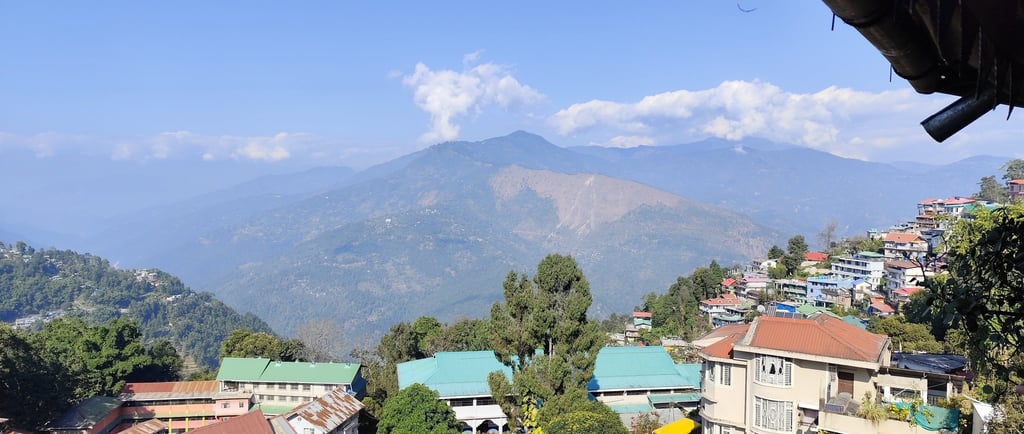

"This past December 2024, our team made a special journey to West Bengal in northern India. Just to the north, Sikkim state stretches up into the towering Himalayan mountain range. Our destination was the border regions of Darjeeling and Kalimpong, nestled against Sikkim's southern edge – home to the hidden world of Himalayan coffee.
In a land traditionally associated with milk tea and endless tea plantations, coffee cultivation began just about a decade ago. We were fortunate to visit a remarkable coffee farm that has already earned specialty-grade recognition, marking an incredible milestone in this emerging coffee region's story."
Himali Highland Coffee
When people think of northern India, Darjeeling tea is famous, but the neighboring region of Kalimpong offers similar positioning with views of the Himalayan peak Kanchenjunga.
To reach Kalimpong, you fly from New Delhi airport to Bagdogra airport, then head up from the nearby area of Siliguri. Once you leave Siliguri, the road immediately climbs into the mountains. It's about a 3-hour drive on roads carved into the mountainside – sometimes fascinating, sometimes looking quite dangerous.
When we finally arrived at the 'Himali Group Enterprise' farm, owner 'Rishi' welcomed us warmly. He had so much to share, telling us everything from how the coffee farm began to where it stands today. As we toured different parts of the farm, we heard many personal stories and learned extensively about coffee.
This coffee farm appeared to be an all-in-one operation – cultivation, roasting, and even a small café. There's also a café they operated until before COVID.
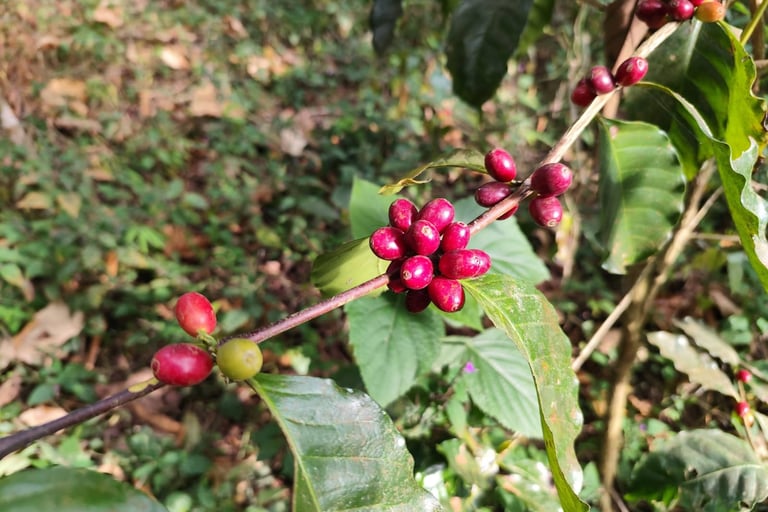

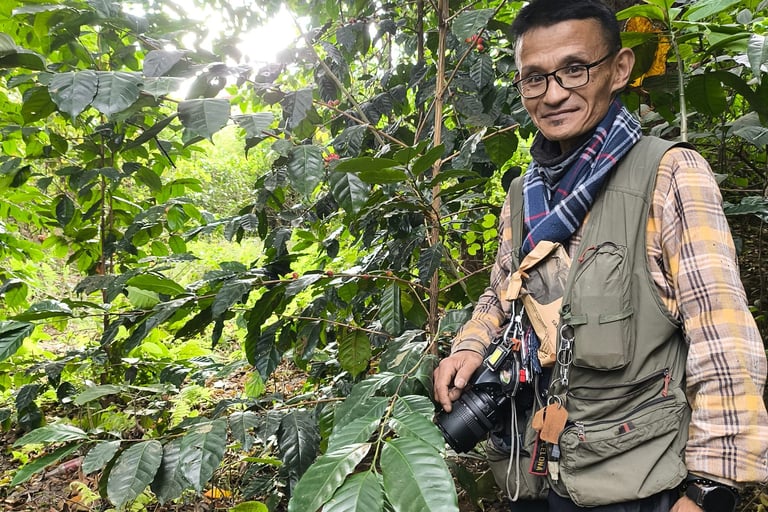

The Beginning of Coffee Cultivation
We heard a fascinating story from the farm owner about how this farm began growing coffee.
Mr. Rishi received four Arabica saplings from Australian coffee expert Llewellyn Tripp in 2014, along with complete technology transfer and equipment for coffee production and roasting.
The farm owner initially cared for these trees out of curiosity, and in 2017 he harvested about 2kg of coffee beans from the mature trees. He then planted more saplings, and now cultivates 400 Arabica plants and 1,000 hybrid Chandragiri variety plants. Last year he produced 650kg of coffee. It's unclear whether this includes other neighboring farms or just his own operation, but he plans to continue increasing his harvest.
You can refer to the content about Mr. Rishi Raj Pradhan in the middle of the newspaper article below.
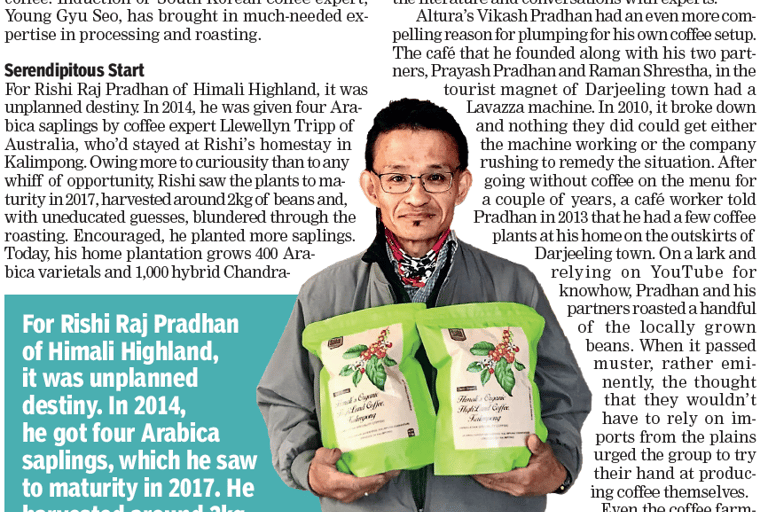

After completing our coffee farm tour in Kalimpong, we received exciting news from him. He submitted his coffee to the Coffee Board of India in Bangalore for evaluation using SCA assessment methods and achieved an overall score of 84.25.
The cupping notes included: Balanced cups with sweet, intense, mixed berries, hint of plum and mild floral(jasmine like) aroma. Plums, prunes, slight winey, grapes like, chocolate and caramel like flavours. Medium+ body. Smooth, silky mouthfeel. Lingering, sweet grapes and prunes like note in the aftertaste.
This coffee showcases an outstanding flavor profile where mixed berry and plum fruit notes are beautifully balanced with subtle hints of chocolate and caramel.
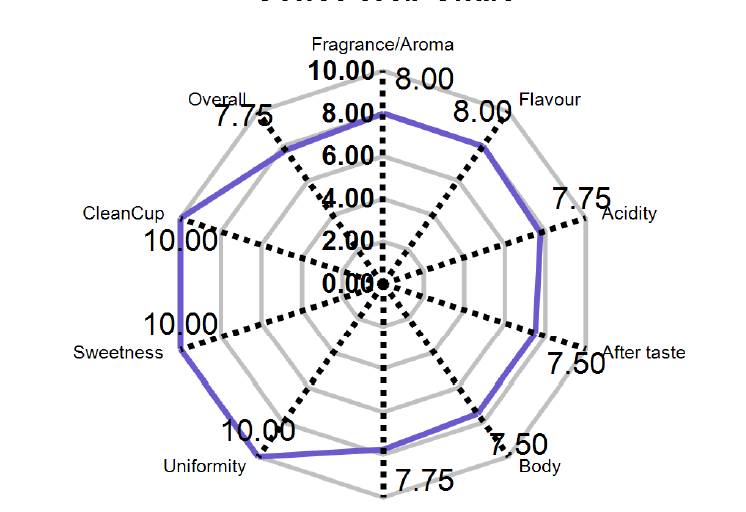

Exploring the Coffee Farm
Walking through the farm, I was impressed by the meticulous attention given to every coffee tree. The farm owner explained that this region's high altitude and unique climate provide ideal conditions for growing specialty coffee. However, he also faces challenges from frost and temperature fluctuations.
Indeed, while the warm midday sunshine felt pleasant, the mornings, evenings, and nights were so cold that even taking a shower was difficult.
One thing the farm owner particularly emphasized was soil acidity. He constantly monitors soil pH to maximize coffee growth and works to maintain optimal pH levels for each coffee variety.
Currently, this farm cultivates three coffee varieties: 'Arsha' from Tanzania, 'Caturra' from Brazil, and the hybrid variety 'Chandragiri' developed in India.
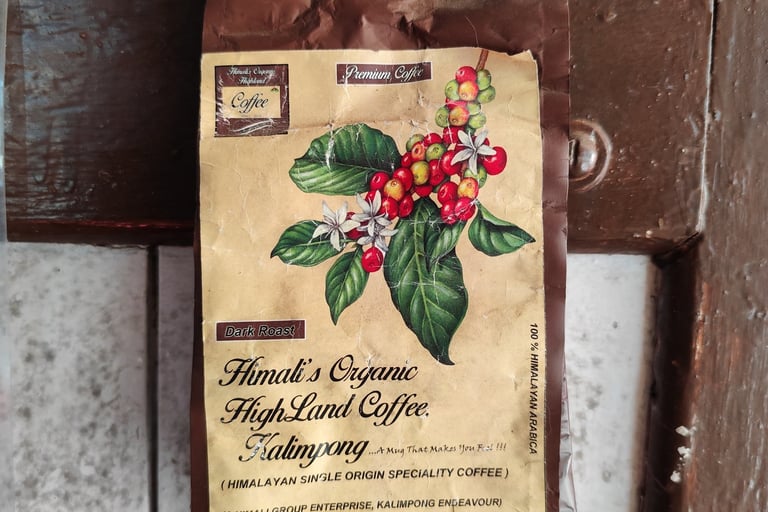

Himalayan Coffee
The highlight of this farm tour was the coffee tasting. I was especially impressed by the fruity aroma of the coffee—it filled my mouth with a sweet, fruit-like flavor. The balanced bitterness at the end left a very pleasant aftertaste.
Maybe it was because I was drinking it right at the origin. In any case, it felt really good.
The coffee from this farm is naturally processed. Thinking about it, that might be because the region is at a high elevation and has limited water resources.
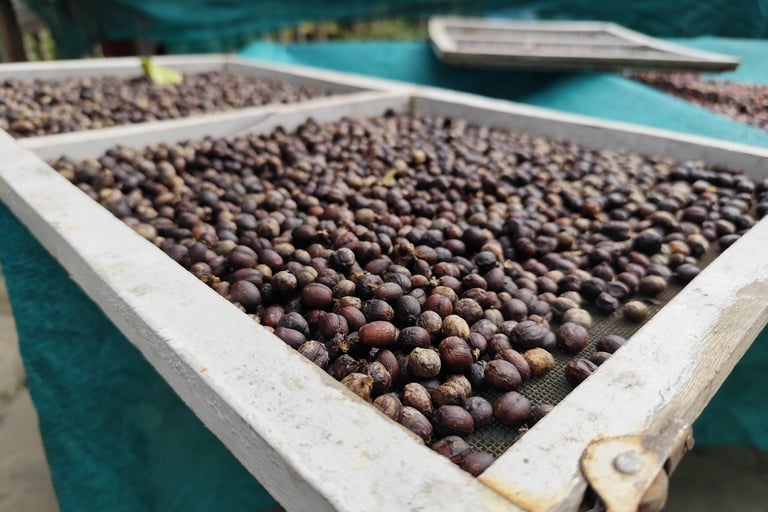

They were using wooden window frames as drying racks, which I found quite amusing. It’s likely that they’ll need to invest in proper drying facilities in the future. Since the farm is located on a slope, it doesn't seem easy to secure a large flat area for drying coffee.
The farmer also mentioned his dream of opening a café—a plan he had in mind before the pandemic. He hopes to serve freshly roasted coffee there so that visitors can enjoy its fresh aroma and taste. There’s even a small bungalow, about 15 pyeong (roughly 50 square meters), on the farm that could potentially be used for accommodation someday.
In conclusion
The Kalimpong coffee farm is still small in scale, but I was deeply impressed by the farmer’s dedication to quality and his vision for the future. The stunning Himalayan landscape and the unique flavor of the coffee grown there are something I’ll never forget.


Himalayan Bloom Coffee
Connecting coffee lovers with Himalayan farmers worldwide.
© 2024. All rights reserved.
